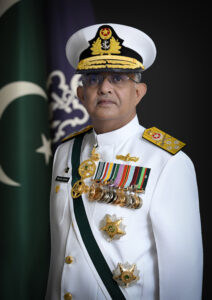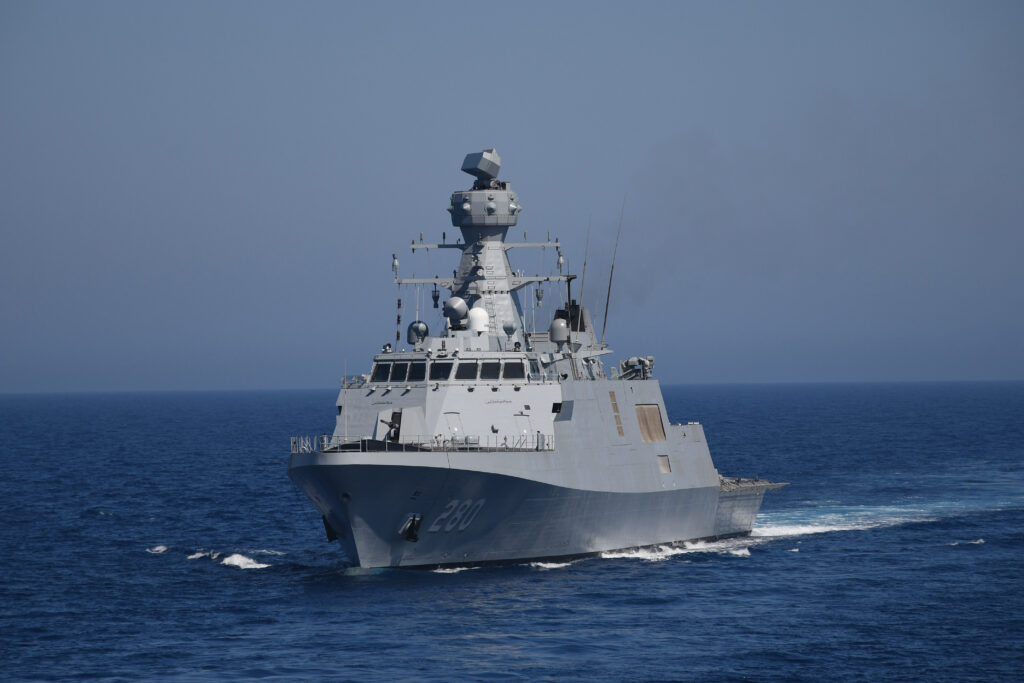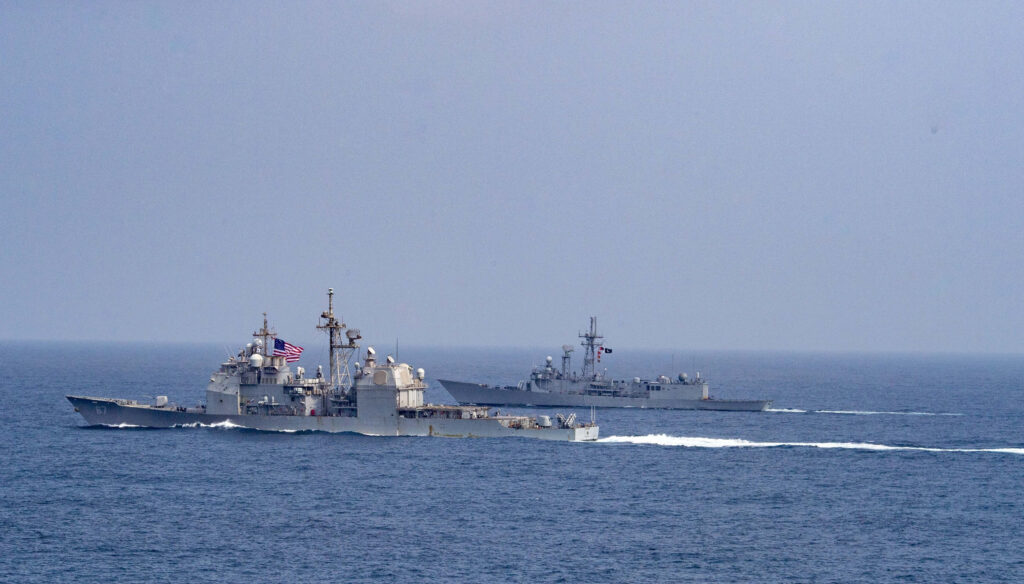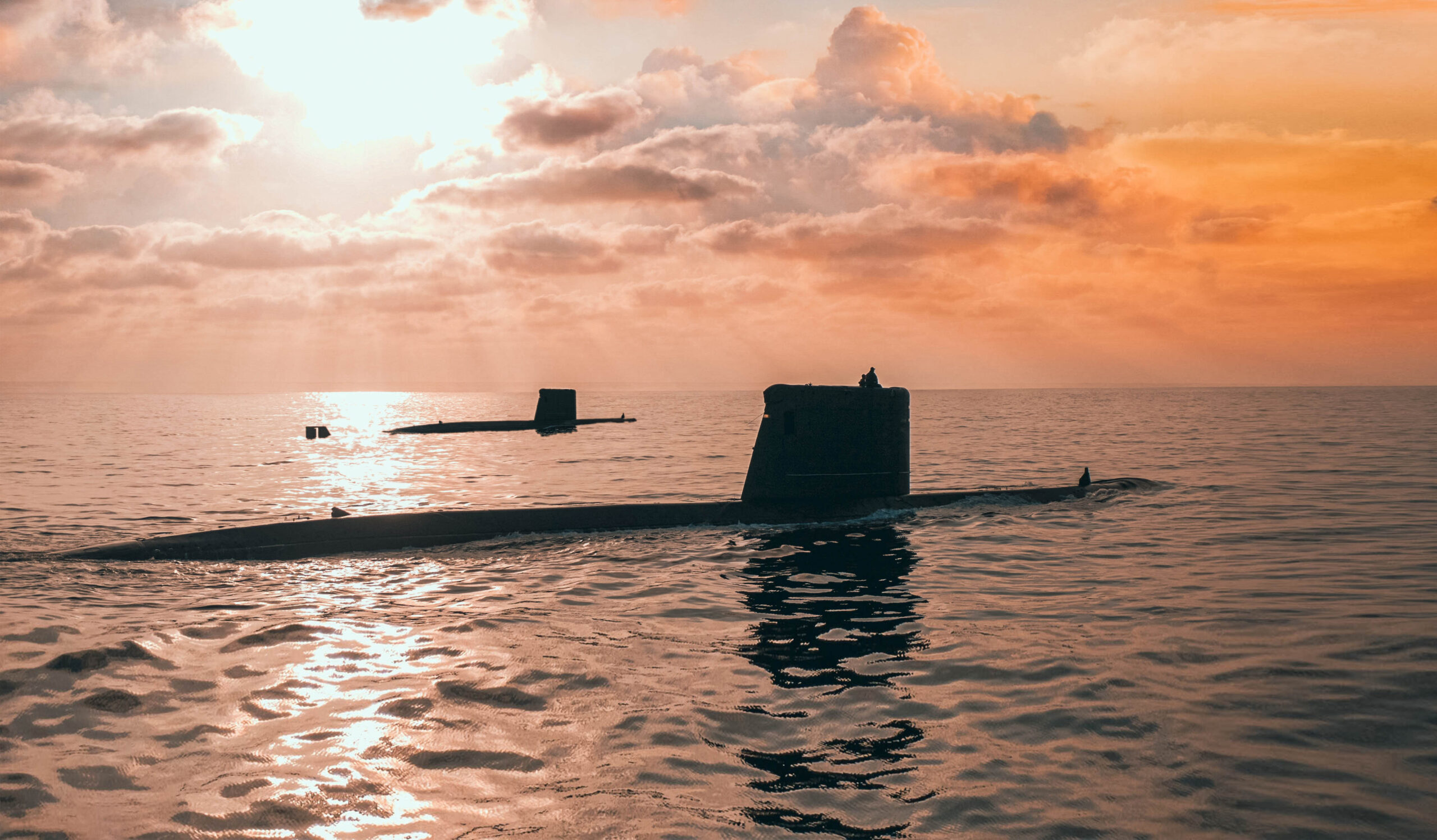ESD recently secured the opportunity to interview Admiral Naveed Ashraf, the Pakistan Navy’s Chief of the Naval Staff, about his ambitions and expectations for the fleet’s development under his leadership. His answers paint a vision of a modernised PN working in partnership with friendly navies to achieve regional stability. The interview was conducted by Conrad Waters.

Admiral Naveed Ashraf assumed command of the Pakistan Navy on 7 October 2023 as its 23rd Chief of the Naval Staff. Commissioned into the navy’s operations branch in 1989, he was awarded the Quaid-e-Azam Gold Medal on successful completion of his initial training in Pakistan and Germany. His subsequent naval career has encompassed numerous command and staff appointments, including serving as commanding officer of a gunboat, minehunter, three destroyers and the 18th and 25th Destroyer Squadrons. He is a graduate of the Pakistan Navy War College Lahore, the National Defence University Islamabad, the Naval Staff College in the United States of America, and the Royal College of Defence Studies in the United Kingdom. His awards and decorations include Pakistan’s Nishan-e-Imtiaz (Military) and Tamgha-e-Baslat.
ESD: What were your primary ambitions for the Pakistan Navy when being appointed Chief of the Naval Staff in October 2023? Which of these objectives have been achieved and which are still to be realised?
Pakistan Chief of the Naval Staff (PCNS): My main objectives included; first, the professional development and well-being of the men and women serving in the Pakistan Navy (PN) through various professional military education and welfare related initiatives; secondly, boosting the navy’s combat readiness through the optimal utilisation of resources and completion of ongoing projects within relevant financial constraints; thirdly, preparing our navy to counter both the conventional and non-conventional threats that are being presented to us; and lastly, strengthening Pakistan’s role as a key maritime player, capable of contributing to regional stability.
I am able to report with satisfaction that the majority of our major equipment projects have either been completed or are near completion. These including the ‘MILGEM’ class corvettes, Yarmook class offshore patrol vessels and Embraer jet long-range maritime patrol aircraft. In addition, the Hangor class submarines will soon become part of our fleet.
Moreover, our ships are active in maintaining presence across the region. Through regional maritime security patrols (PMSPs) and our participation in the Combined Maritime Forces (CMF) we ensure a credible deterrence against both traditional and non-traditional threats. The PN’s proactive international engagement is also demonstrated through multilateral forums and exercises such as AMAN and the AMAN Dialogue. It is my utmost endeavour to make Pakistan a key maritime player for regional stability.

PCNS: The induction of modern platforms and other force multipliers has been a major area of recent focus. At the same time, we have been emphasising indigenisation and the maintenance of diversified supplier options so as to mitigate external dependencies.
To date, we have inducted state-of-the-art Type 054 frigates supplied by China, offshore patrol vessels built in Romania [interviewer’s note: built by the Dutch Damen group’s shipyard at Galați] and the first of a class of ‘MILGEM’ type corvettes ordered from Turkey. We are still in the process of inducting the remainder of the ‘MILGEM’ class frigates, two of which are being constructed indigenously at Karachi Shipyard & Engineering Works (KSEW). In addition, Hangor class submarines that have been contracted with China will form part of the PN soon.

PCNS: We believe that collaboration with international partners is the best way ahead to ensure the robust development of our capabilities. In this regard, we have collaborated with both Turkey and China to develop warship construction and these partnerships are expected to grow further in the future.
ESD: The arrival of new equipment will inevitably give rise to management challenges in areas such as crew training and logistics. What steps are you taking to ensure your new vessels are being operated as efficiently as possible?
PCNS: Ensuring well trained and highly skilled human resources is at the top of my list of priorities. The challenge of training and educating the future generation of PN personnel is being addressed through optimising the navy’s professional military education institutes. This includes the integration of the latest technology, including the use of simulators and application-centric (outcome-based) learning.

PCNS: The PN’s active participation in CTF led operations has provided Pakistan with an opportunity to observe, learn and apply some of the best practices being used by major navies around the world. It has also increased the PN’s global outreach, leading to improvement in relations and collaboration with both regional and extra-regional partners.
ESD: What is your vision for the Pakistan Navy’s role and capabilities within the context of the broader Pakistan Armed Forces a decade from now?
PCNS: The Pakistan Navy will need to be capable of ensuring good order across the Arabian Sea and adjoining areas, working in partnership with like-minded countries to achieve this goal. In this way, a safe and secure maritime environment will be achieved. Such an environment will assist the development of trade, helping to achieve economic prosperity throughout the region and beyond.
ESD: Thank you, Admiral, for your informative responses. We wish you well in realising your vision.




